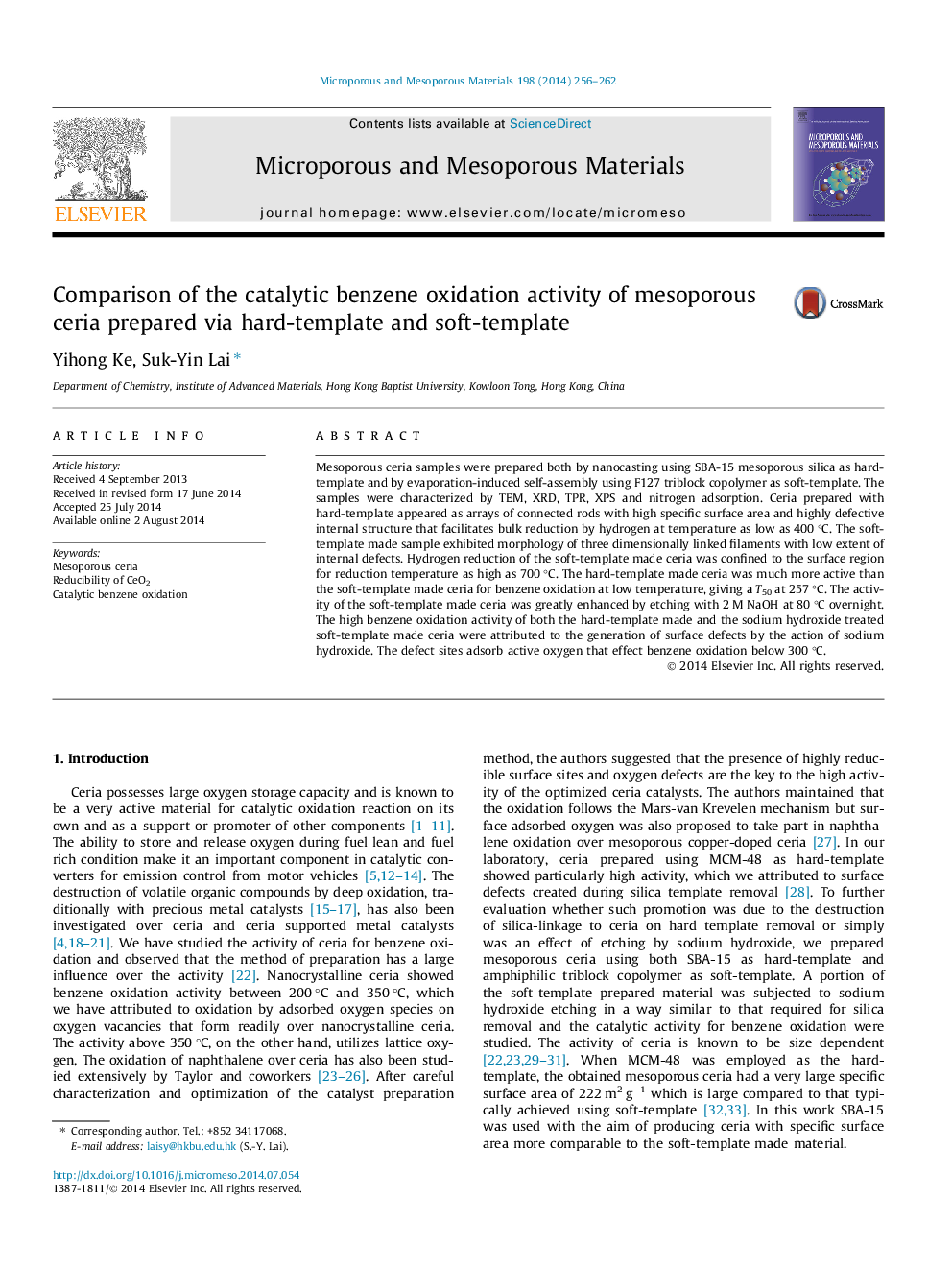| کد مقاله | کد نشریه | سال انتشار | مقاله انگلیسی | نسخه تمام متن |
|---|---|---|---|---|
| 72956 | 49038 | 2014 | 7 صفحه PDF | دانلود رایگان |

• Extensive internal defects facilitate bulk reduction of hard-template made ceria.
• Hard-template made ceria is active for benzene oxidation at low temperature.
• Ceria made with soft-template has smooth surface and little internal defects.
• This ceria has poor benzene oxidation activity that can be enhanced by NaOH etching.
Mesoporous ceria samples were prepared both by nanocasting using SBA-15 mesoporous silica as hard-template and by evaporation-induced self-assembly using F127 triblock copolymer as soft-template. The samples were characterized by TEM, XRD, TPR, XPS and nitrogen adsorption. Ceria prepared with hard-template appeared as arrays of connected rods with high specific surface area and highly defective internal structure that facilitates bulk reduction by hydrogen at temperature as low as 400 °C. The soft-template made sample exhibited morphology of three dimensionally linked filaments with low extent of internal defects. Hydrogen reduction of the soft-template made ceria was confined to the surface region for reduction temperature as high as 700 °C. The hard-template made ceria was much more active than the soft-template made ceria for benzene oxidation at low temperature, giving a T50 at 257 °C. The activity of the soft-template made ceria was greatly enhanced by etching with 2 M NaOH at 80 °C overnight. The high benzene oxidation activity of both the hard-template made and the sodium hydroxide treated soft-template made ceria were attributed to the generation of surface defects by the action of sodium hydroxide. The defect sites adsorb active oxygen that effect benzene oxidation below 300 °C.
Figure optionsDownload as PowerPoint slide
Journal: Microporous and Mesoporous Materials - Volume 198, 1 November 2014, Pages 256–262